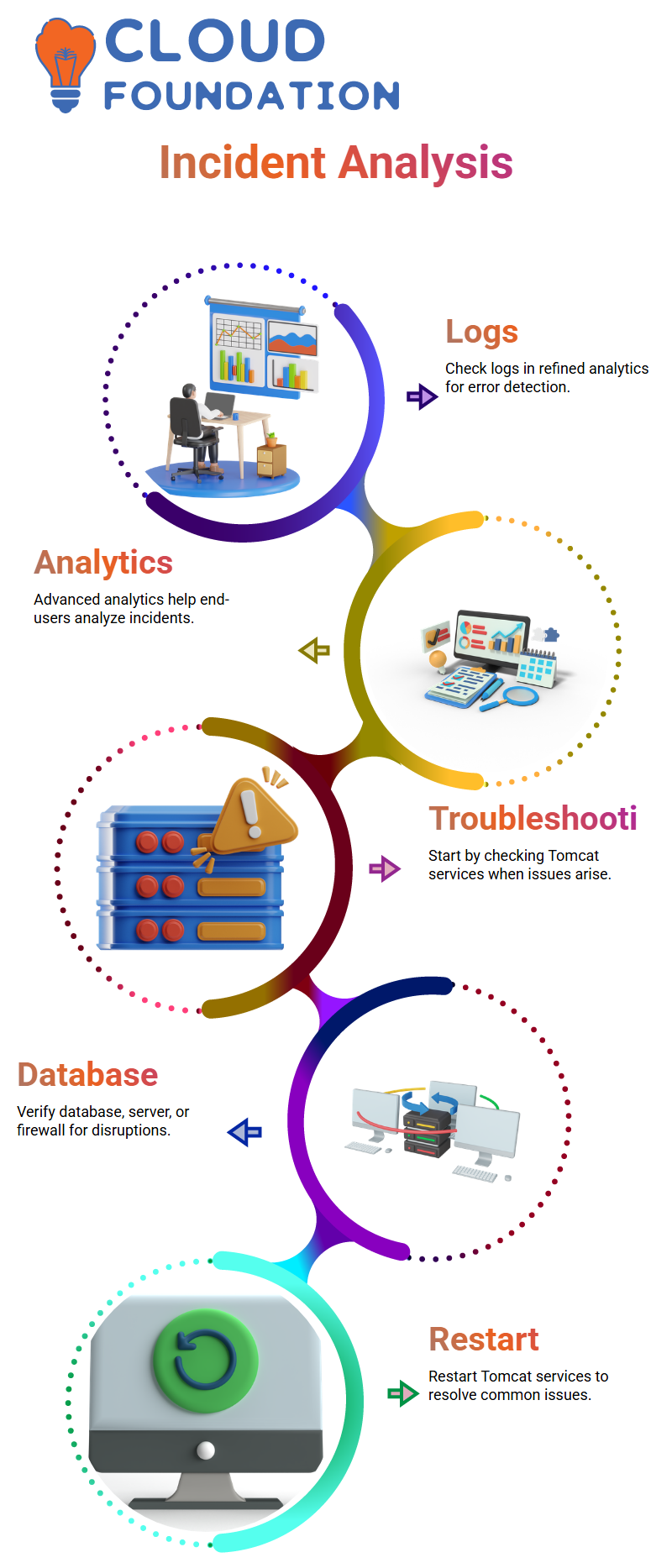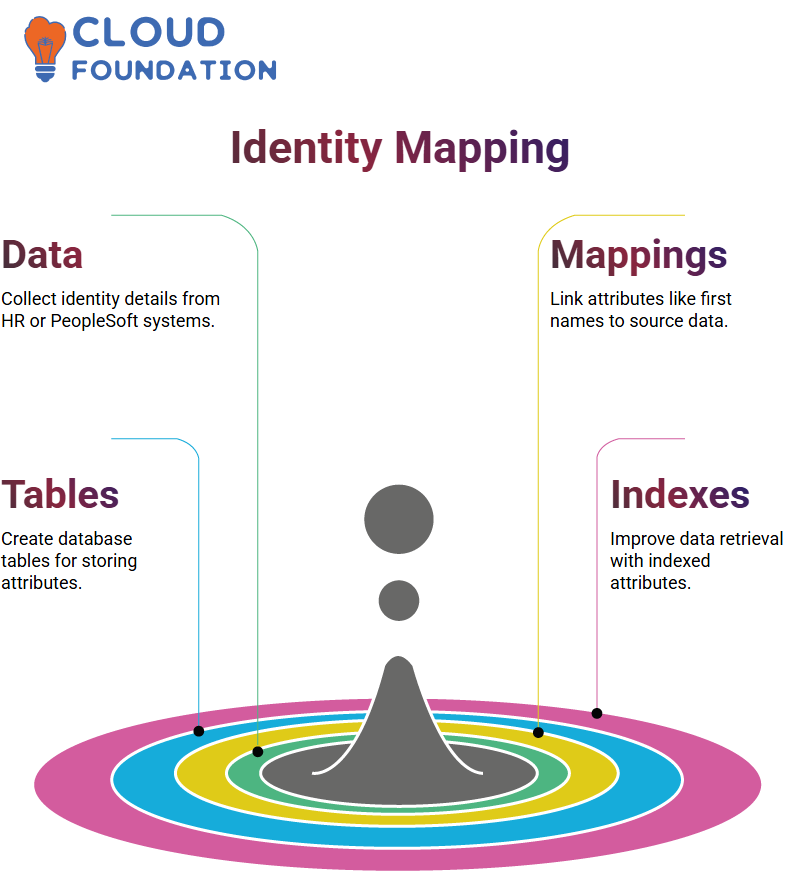SailPoint Configuration guide | SailPoint Best Practices
SailPoint Traits
Now I want to give you some news about the SailPoint attribute establishment process that I find captivating.
The first step is to ensure your attribute’s type is correctly selected. It can be a string, an integer, or an identity type. Of course, in SailPoint, if you are working with numbers, choosing the type ‘integer’ should be your first and most logical move.
This is because you are dealing with numbers, and thus, any additional action won’t work!
The SailPoint tool also licenses you to set the elements as searchable and editable. If it is editable, you can quickly make obligatory changes to the values. That’s handy.

SailPoint Lifecycle Manager
When you are active in a live SailPoint project and want to access the Lifecycle Manager (LCM) features, it is good to remember that LCM is not available in the standard version.
While SailPoint is free for local systems, customers must subscribe to these features to capitalise on them.
Clarity and being able to employ LCM in SailPoint are the skills that are commonly asked about in interviews by industry professionals.
Creating Quick Links in SailPoint
Using the Quick Links, it is easy to steer and submit access requests in the SailPoint stage. You can invent these Quick Links by hitting the edit icon for easy reference.
The Quick Links Configuration is a key point in fine-tuning workflows.

Submitting Access Requests in SailPoint
Submitting an access request in SailPoint starts with the user’s selection. The default identity displayed is always your own.
Suppose you are submitting a request for a third party, such as a manager or a report. In that case, you are at liberty to select their identity.
After this, you will have to control access with the help of the capacities or entitlements required. Every soloist choice is linked to an owner.
So the approval requests are being sent to the respective owners.
Controlling Bulk Requests in SailPoint
With SailPoint, you can tick off multiple identities in bulk additions when requesting access, but the bulk option is unavailable for removals.

In this case, you can choose only one identity at a time.
Approval Method in SailPoint
The approval process in SailPoint is adaptable, and it suits the demands of the clients. The Employee should be able to explain the approval process based on the number of levels, for example, with up to four levels (like that of the manager, the entitlement owner, the IAM team, etc., and the security personnel).
After the approvals are done, the system will create a plan to achieve the access granted.
Locating Configuration Files in SailPoint
Understanding the location of the main configuration files in SailPoint is essential. For example, the ‘anyType and LCMXML’ files can be found in the ‘web-inf’ folder in the ‘config’ folder.
These files are generally brought in during installation and are very important for the configurations.
SailPoint Incident Code Analysis
SailPoint—incident codes and forward-thinking analytics. Have you ever seen an incident code during your work in SailPoint?
If yes, the first step that you need to take is to see the logs in refined analytics. It’s the fastest way to detect the errors and solve them quickly.
As a SailPoint administrator or developer, you are most likely the one who can get to those logs on the server.
But are you only an end-user without any access? The solution is already here! Developed analytics can assist you.
If an error displays while sourcing to the lifecycle manager, evaluate switching to cutting-edge analytics to take a closer look at the issue.

Troubleshooting SailPoint applying Tomcat and Database Checks
Troubleshooting mode! Where do you start when your production or lower environment is down and the site is not handy?
Checking Tomcat services first is the most sensible thing to do when the website is unavailable.
If not, Tomcat might cause the problem: the database, the internal server, or the firewall settings.
One of the simple skills of a SailPoint professional is performing the above troubleshooting skills.
Should this situation happen on a Windows or Linux OS, restarting Tomcat services would be valuable to solve ordinary inclusiveness issues.
A Linux server in SailPoint
Working with SailPoint on a Linux server, you will almost certainly need the PuTTY tool, which is one of the most essential.
Linux components will make you work more ‘fluently’ with any other systems you might want to use. On the contrary, Windows needs you to turn on PuTTY for SSH access.
Reflect on this context, have you ever issued a login employing the command prompt in Windows? In a SailPoint setup based on Linux, Putty does the same kind of work, allowing users to direct and deploy applications easily.

SLA and ETA for SailPoint Applications
One frequently asked question is whether SailPoint has an SLA for applications onboarding.
No doubt, SLAs are not relevant to the case of service tickets, but when it comes to application deployment, SailPoint has been following ETA so far.
In the case of different applications, the amount of time indispensable for deployment varies. Some of the applications are so dense that, as a result, they take a few months to develop.
The sweeping identity provisioning involved in every step from development to testing and production must be reviewed to confirm faultless execution.
Full Access vs Restricted Access in SailPoint
Everyone desires complete access, although following SailPoint’s security standards, access is controlled, giving the impression that not everyone is entitled. Users with restricted permissions are not allowed access to the whole data repository.
To properly comprehend SailPoint’s uses, the varied skills of SailPoint that we will discuss in more detail will verify that access management is maintained in an unambiguous and expedient state.

SailPoint Characteristics in Database Scripts
By SailPoint, hibernate file once it is upgraded, the next step is to develop a database script. Scripts like ‘IAQ Extended Schema’ are command tools responsible for correctly adding new elements to the system.
With the transitions verified, the timestamp in the database directory is what we look at first. Once the update gets completed, we can run the scripts locally through MySQL Workbench or any other database tool.
Duplicate Properties in SailPoint
Managing duplicate qualities in SailPoint can sometimes become a problem. In some examples, it will be an issue if an extended attribute is already there, and we will save this in the database as well, which will return an error for duplicate indexes or passkeys.
We can assure that no such thing happens if we inspect the properties there carefully, before we put new ones on a specific entity.
This way, a prescribed way in SailPoint is adapted, and the work is done without conflicts.
Tending and Decommissioning System in SailPoint
Applications get updated, and in some situations, it is essential to dispose of them. The process in SailPoint that is used to support the closing of the service channel and discontinuing aggregation is called decommissioning.
When this is done, the system being developed, the unauthorised gate is closed, and the governance is untouched.
Decommissioning refers to specifying an expiry date, and upon reaching that date, the application is removed from the active state If no reactivation date is set, the application permanently goes out of service inside of SailPoint The well-organized sustenance process grants greater application lifecycle management, which in turn guarantees the best security for identity and access governance.
Configuring Characteristics in SailPoint
Later, the manipulation of the features is the purpose of SailPoint Universal Settings.
Insert the attribute names exactly as they are written in the Hibernate file. Details such as Application Custodian or City Name must be a perfect match to ensure SailPoint can operate them correctly.
This action will provide all the current data between SailPoint and your database, so your features will be joined with the respective application mappings.

SailPoint Target Mapping Overview
When it comes to these very subjects, SailPoint becomes the leader in the area of identity and access management in organisations.
In the case of SailPoint, it is indispensable to know how target mapping is done. So, instead of directly changing the target application, the SailPoint solution sanctions access requests to be provisioned automatically through workflows.
This keeps managing access more expedient and grants access to more compliant and guaranteed operations.
SailPoint’s source mapping function can be used to acquire data from your trusted applications, like HR systems.
Selecting the attribute is as simple as providing a first name. As soon as you join the attribute of SailPoint with the source system column, it is feasible!
Conversely, target mapping verifies that any adjustments made in SailPoint will be immediately reflected in the target system.
This detail is seldom implemented, yet it assists the purpose of data synchronisation in particular circumstances.
Without much doubt, SailPoint is the best way to deal with identity and application mapping.
SailPoint Identity Mapping
Identity mapping in SailPoint is a powerful way for SailPoint to organize its customers. By default, imported identities in SailPoint might not contain all the required data, as they are missing users’ names for the prototype.
Collecting the data from the HR or PeopleSoft systems is the easiest way to get the reports. The person’s identity will be established if these are the primary sources of correct identity news, thus allowing for the proper identity mapping.
SailPoint proposals standard details right from the start. First name mappings can be a prototype, which enables you to move data from the source system smoothly.
Just switch to universal settings, go to identity mappings, and link traits such as first names or last names to their respective sources, and you are ready to go!

Tables and Columns in SailPoint
The process of updating the database in SailPoint requires the creation of tables and columns for each attribute.
One good illustration of this point can be given by adding a GUI Number and showing how the index will contribute to prompt storing and quick fetching of the attribute. We may say that GUI Number will be the new prototype of a simple data type in a row in the user’s GUI.
To implement the alterations, you can put to use the SailPoint command prompt or MySQL Workbench.
Being case-vulnerable is one of SailPoint’s exceptional features, so do not forget to double-check your inputs. The new entries and corresponding indexes can be seen with a fresh database if the command is executed successfully.
Extended Qualities in SailPoint
If you think of creating a job type attribute in SailPoint, you are the decision-maker regarding whether it should be an integer, Boolean, or string.
This attribute is what sets SailPoint apart as a flexible access management system. As a case in point, the attribute ‘Boolean’ through a checkbox allows you to permit it for ‘true’ and disable it for ‘false’.

First, the most important thing is that SailPoint not only licenses but also can be easily marked as traits like the names of cities, which are mandatory.
You can list values like Bengaluru, New Delhi, Chennai, or Kolkata so that users can be sure of their choice.
SailPoint Applications
Welcome to the new generation of SailPoint that makes applications with our app factory as smooth as a breeze! Release me to lead you in setting up a fresh app that end-users can see.
Can you picture yourself taking a client’s description and safeguarding everything they need to ensure end-users are reflected? Switching the application on broadens the capability; it’s the plain element of transformation and makes the activities uninterrupted.
SailPoint operates with connectors, which act as a go-between for SailPoint and a target application. These connectors are multipurpose data aggregators, and they guarantee that everything is running smoothly.
If your data is in files, databases or active directory systems, SailPoint is a perfect solution. Besides, it is also compatible with cloud applications, where you can move the data with the highest expediency.
As soon as your Hibernate file is updated, you have to change the structure of the database table. This step uses the SailPoint command for an extended schema change. Performing this action, you practically update your database to reflect the new attribute.
Why not look at SailPoint’s universal settings after updating the table and add the attribute?
Here, it’s not identity mapping—it’s application mapping. This is where you interpret your traits, manage, and use them in SailPoint.
Tips for Working Proficiently with SailPoint
Always use the command inputs of SailPoint for your case, and use the naming convention where the attribute is named with a lowercase letter. However, this drill will trouble you with errors in the process implementation.
SailPoint uses provided tools like MySQL Workbench to interact with a database easily. You should go for the one you are most comfortable with, bringing you the most outstanding results, and then stick to the chosen tool to systematise your system.

Navya Chandrika
Author



